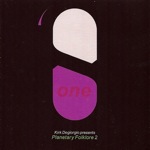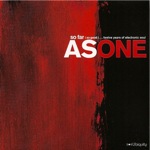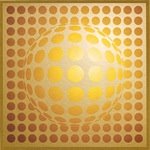Plug-in's have improved a lot since the days of my Pro Tools Mix 24/G4 setup and I now have no reservations regarding sound-quality when used in conjunction with outboard. This is an important point though - I still hear a 'thin/plastic' quality with finished tracks that are created solely with software synths. This is no 'hardware/analogue' snobbery on my part. I genuinely believe software synths are best when used sparingly in tracks consisting mostly of audio from hardware synths.
So here are my findings so far after trying many plug-in's this year, split into two distinct varieties - Instruments and Effects - although some plug-in's blur the distinction between the two.
Firstly let me state my philosophy regarding the concept of plug-in's. Personally I see little value and therefore, tend to avoid, plug-ins that aim to "clone" or "emulate" real hardware devices. I have little time for SSL or API "emulations" or Minimoog or ARP Odyssey "clones", no matter how accurate the coders claim the results to be. To me they are unoriginal and uninspiring.
For me the excitement in the plug-in world comes from designs that would be either near-impossible or impractical to re-create with hardware.
However - I do think it is acceptable for soft-synths to improve upon previous digital synth technology, as these clearly can be improved upon with todays computing power - which brings me to the first two plug-in instruments I most currently use, both of which expand upon previous examples of digital synthesis.
Instruments:

Native Instruments - Massive
I've been using NI Massive for over two years now. It reminds me of my old Waldorf Wave, which I reluctantly sold some years ago. It's amazing to think the power of that huge synthesizer with its waveform analysis, analogue filters and multistage envelopes can be superseded by a neat soft-synth with single screen GUI.
Of course, Massive does not have the true analogue 4-pole filters of the Wave, and therefore the general timbre is a touch more digital. However, Massive has dual multimode filters which can be arranged in parallel or series for a multitude of effects far beyond the capability of the Wave.
Massive has three wave-scanning oscillators - one more than the Wave - and a modulation oscillator to create ring-modulation and filter FM effects. Various effects including bit crushing, delay, etc, can be inserted at different stages thanks to the editable routing system and most parameters can be modulated.
The modulation sources are perhaps my favourite part of Massive. The only drawback being most parameters are limited to one or two modulation sources and single control source. Morphable multi-stage envelopes, LFO's and step sequencers are all on hand for syncable modulation - implemented by an elegant drag and drop system.
Eight macro controls can be setup for powerful real-time tweaking and of course, any control can be assigned to a Midi controller knob or slider.
PROS:
Intuitive GUI.
Elegant drag and drop modulation system.
Dual mode step sequencer modulation: stepper or performance.
Powerful multi-stage envelopes.
Three main oscillators plus modulation oscillator.
Unique filter types.
Morphable parameters.
Macro-controls.
Re-routable effects matrix.
CONS:
Only eighty-five wavetables currently available.
Limited single or dual modulation slots for most parameters.
Cannot import custom-made wavetables.













No comments:
Post a Comment